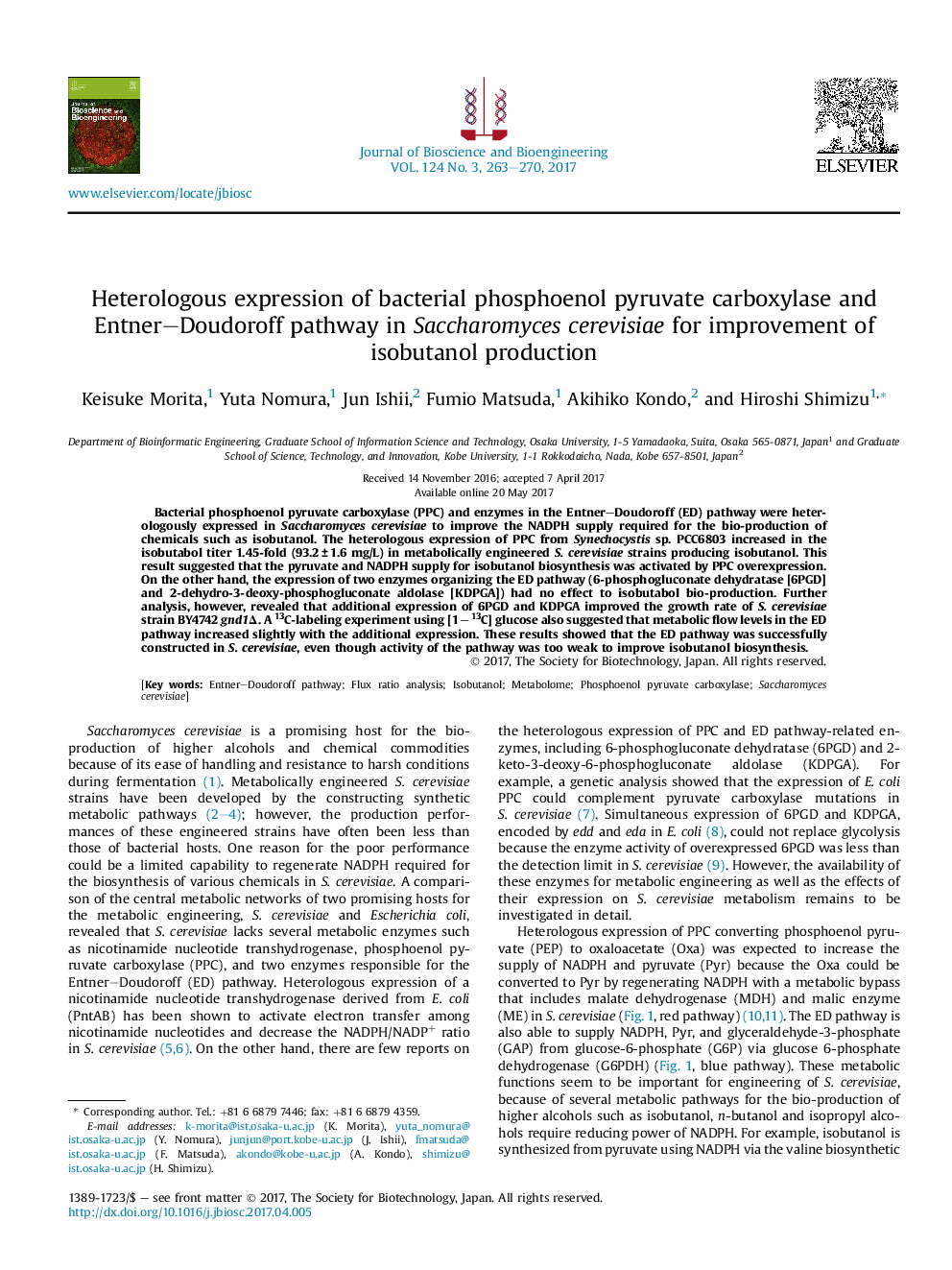| Article ID | Journal | Published Year | Pages | File Type |
|---|---|---|---|---|
| 4753240 | Journal of Bioscience and Bioengineering | 2017 | 8 Pages |
â¢Expansion of the yeast metabolism was demonstrated.â¢Bacterial phosphoenol pyruvate carboxylase increased in the isobutabol titer 1.45-fold.â¢Introduction of Entner-Doudoroff (ED) pathway had no effect to isobutanol bio-production.â¢Further tracer and metabolome analyses revealed that ED pathway was successfully constructed in yeast.â¢Activity of the ED pathway, however, was too weak to improve isobutanol biosynthesis.
Bacterial phosphoenol pyruvate carboxylase (PPC) and enzymes in the Entner-Doudoroff (ED) pathway were heterologously expressed in Saccharomyces cerevisiae to improve the NADPH supply required for the bio-production of chemicals such as isobutanol. The heterologous expression of PPC from Synechocystis sp. PCC6803 increased in the isobutabol titer 1.45-fold (93.2 ± 1.6 mg/L) in metabolically engineered S. cerevisiae strains producing isobutanol. This result suggested that the pyruvate and NADPH supply for isobutanol biosynthesis was activated by PPC overexpression. On the other hand, the expression of two enzymes organizing the ED pathway (6-phosphogluconate dehydratase [6PGD] and 2-dehydro-3-deoxy-phosphogluconate aldolase [KDPGA]) had no effect to isobutabol bio-production. Further analysis, however, revealed that additional expression of 6PGD and KDPGA improved the growth rate of S. cerevisiae strain BY4742 gnd1Î. A 13C-labeling experiment using [1â13C] glucose also suggested that metabolic flow levels in the ED pathway increased slightly with the additional expression. These results showed that the ED pathway was successfully constructed in S. cerevisiae, even though activity of the pathway was too weak to improve isobutanol biosynthesis.
